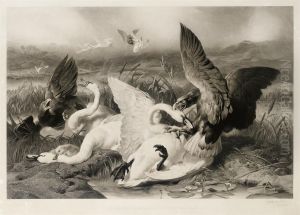Joseph Bishop Pratt Paintings
Joseph Bishop Pratt, born in 1870, was an artist whose work, while not widely known in the mainstream art world, contributed significantly to the artistic movements of his time. Pratt's journey into the arts was influenced by the cultural and social milieu of the late 19th and early 20th centuries, a period marked by rapid changes and the search for new expressions in art. His early life, spent in an era of industrialization and innovation, provided a backdrop against which he developed his unique artistic vision.
Pratt's education and training in art were reflective of the period's emphasis on both classical traditions and the emerging modernist tendencies. He navigated through these influences, absorbing techniques and ideas, which he later melded into his distinct style. Throughout his career, Pratt engaged with various mediums, exploring the potentials of painting, drawing, and printmaking. His work exhibited a keen observation of nature and humanity, often imbued with a sense of introspection and a quest for underlying emotional and spiritual truths.
As Pratt's art evolved, he became increasingly interested in the interplay of light and shadow, a theme that would become central to his work. His landscapes and portraits are noted for their depth and sensitivity, capturing the transient beauty of moments and the complexity of human emotions. Despite his considerable talent, Pratt remained relatively detached from the prominent art circles of his time, choosing instead to focus on his personal artistic journey. This independence meant that while he was respected among his peers, his work did not gain the widespread recognition it perhaps deserved during his lifetime.
Joseph Bishop Pratt passed away in 1945, leaving behind a body of work that, though not as celebrated as that of his contemporaries, offers a rich legacy for those who discover it. In recent years, there has been a growing appreciation for Pratt's contributions to art, with scholars and collectors alike reassessing his place within the broader narrative of early 20th-century art. His work, characterized by its emotional depth and technical proficiency, continues to inspire and captivate audiences, securing his posthumous reputation as an artist of significant merit.






